Welcome to the vibrant and diverse world of Filipino cuisine, where flavors burst with a delightful mix of sweet, sour, and savory notes. In this blog post, you will see a sampling of fan-favorite Filipino food dishes cooked using vegetables.
Rooted in rich culinary traditions passed down through generations, Filipino food is a reflection of the country's history and cultural heritage. One aspect that sets it apart is its emphasis on vegetables - from crisp greens to exotic root crops, these nutritious ingredients take center stage in many traditional dishes.
Jump to:
How to Keep Vegetables Looking Vibrant
Wondering how to keep vegetables fresh and vibrant looking come mealtime? Try these cooking methods.
Blanching: More often than not, this is one of the first steps I take when cooking any dishes that contain vegetables. Why? Because blanching preserves the flavor, texture, and color of vegetables, making your dishes more inviting and delectable. Don't you agree? I mean, look at that Vegetable Pancit picture below. The vegetables are perfectly cooked with the right amount of crispness when you bite into every carrot, broccoli, and pea pod. And the flavor? You will taste the natural flavor without any bitterness from the vegetables, making this easy-to-make Filipino vegetable noodle dish so satisfying with each and every bite.
Blanching is when you immerse the vegetables for a quick short few minutes of time in hot boiled water, then quickly remove and then shock in an ice-cold water bath (if not used to cook right away) or stir-fry (if the vegetable ingredients are being cooked immediately).
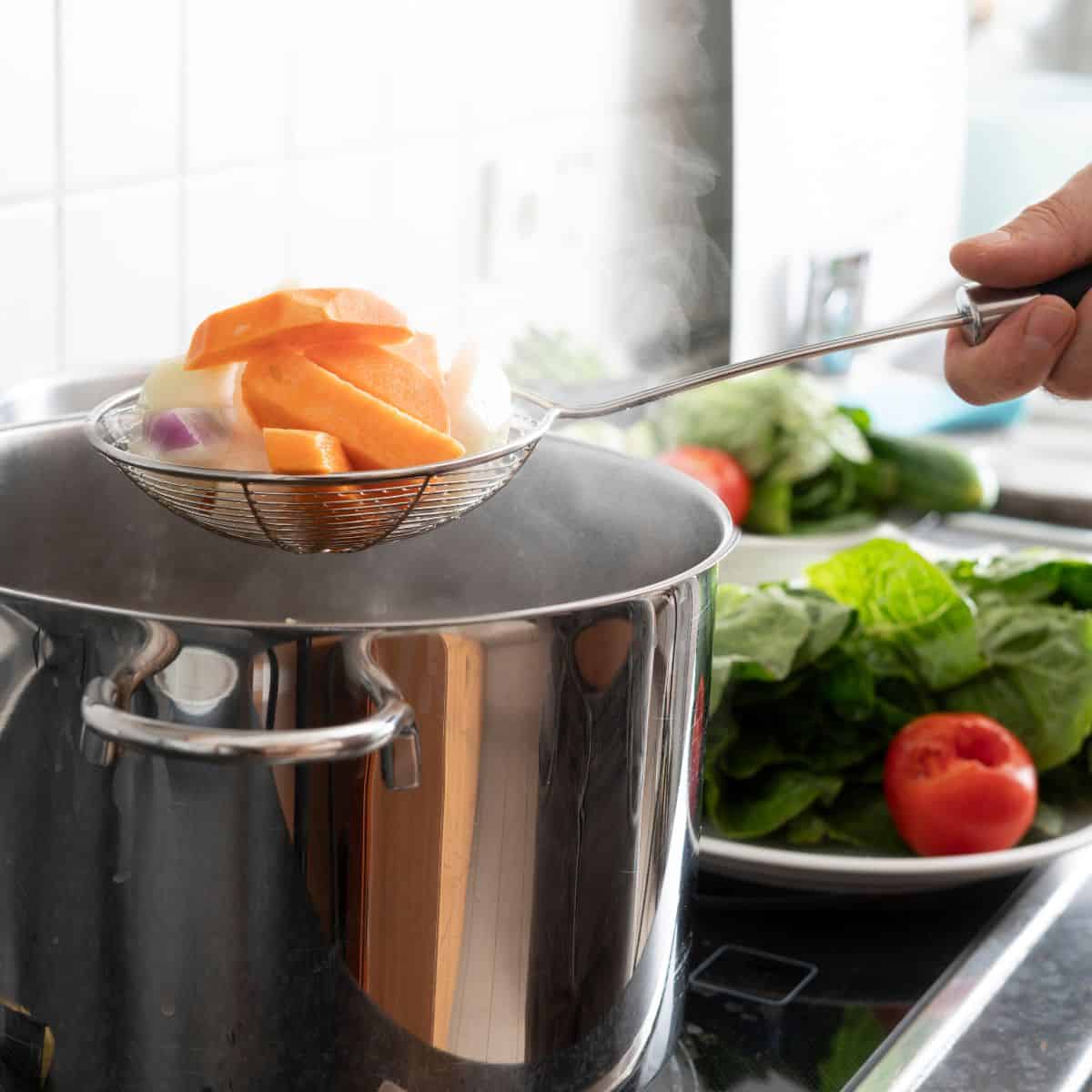
Stir-fry: another way to keep all the vegetables' bright colors and crisp textures is by stir-frying. Stir-frying is when small cuts of vegetables are cooked quickly in a small amount of very hot oil while stirring so the vegetables do not rest on the hot pan to prevent them from burning. If you want to retain the bright colors of the vegetables, you'll want to make sure you stir the vegetables constantly. Long chopsticks would be great to use in stir-frying. Otherwise, a spatula, wok spatula, slotted spoon, or tongs would do the trick.
Another way to ensure that all the vegetables in your dishes cook at the same time is to cut them all the same size as I did here for the Opo Squash recipe. The opo squash and shrimp are all cut into bite-sized portions.

Recipe Roundup of Filipino Dishes with Vegetables
Noodle Recipes
- Vegetable Filipino Pancit Noodles

- Stir-Fried Egg Noodles with Vegetables

- Filipino Pancit Canton Noodles with Vegetables

Soups
- Quick and Easy Shrimp Sinigang with Vegetables

- Sinigang Pork Belly with Vegetables

- Chicken Tinola with Spinach and Chayote

- Beef Nilaga (Bulalo) with Cabbage, Broccoli, and Green Onions

- Pork Country Ribs Sinigang with Vegetables
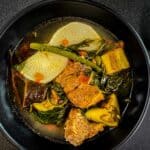
- Leftover Roast Chicken Soup with Vegetables

Stews
- Chicken Afritada with Fresh Tomatoes

- Beef Caldereta with Potatoes and Bell Peppers

- Beef Mechado with Potatoes and Carrots

- Beef Kare Kare with Vegetables
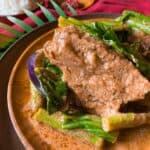
- Chicken Mechado with Vegetables

- Filipino Chicken Curry with Vegetables
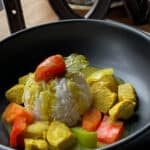
- Chicken and Vegetables in Red Curry Sauce

Stir Fry
- Beef Steak (Bistek) with Potatoes and Onions

- Opo Squash with Shrimp

- Beef Stir Fry with Broccoli (Easy Filipino Recipe)

- Stir Fry Beef With Bell Peppers

Vegetarian
- Chickpea and Tofu in Red Curry Sauce (Easy Recipe)

- Filipino Cucumber Salad

- Butternut Squash Chickpea Curry
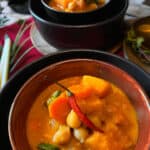
If you make this recipe, post a photo using the hashtag #JOZmahal. Let's be taste buds and follow me on Facebook, Twitter, Instagram, and Pinterest.
Cooking Tips
Looking for answers to some of your cooking or food-related questions? Check these out!













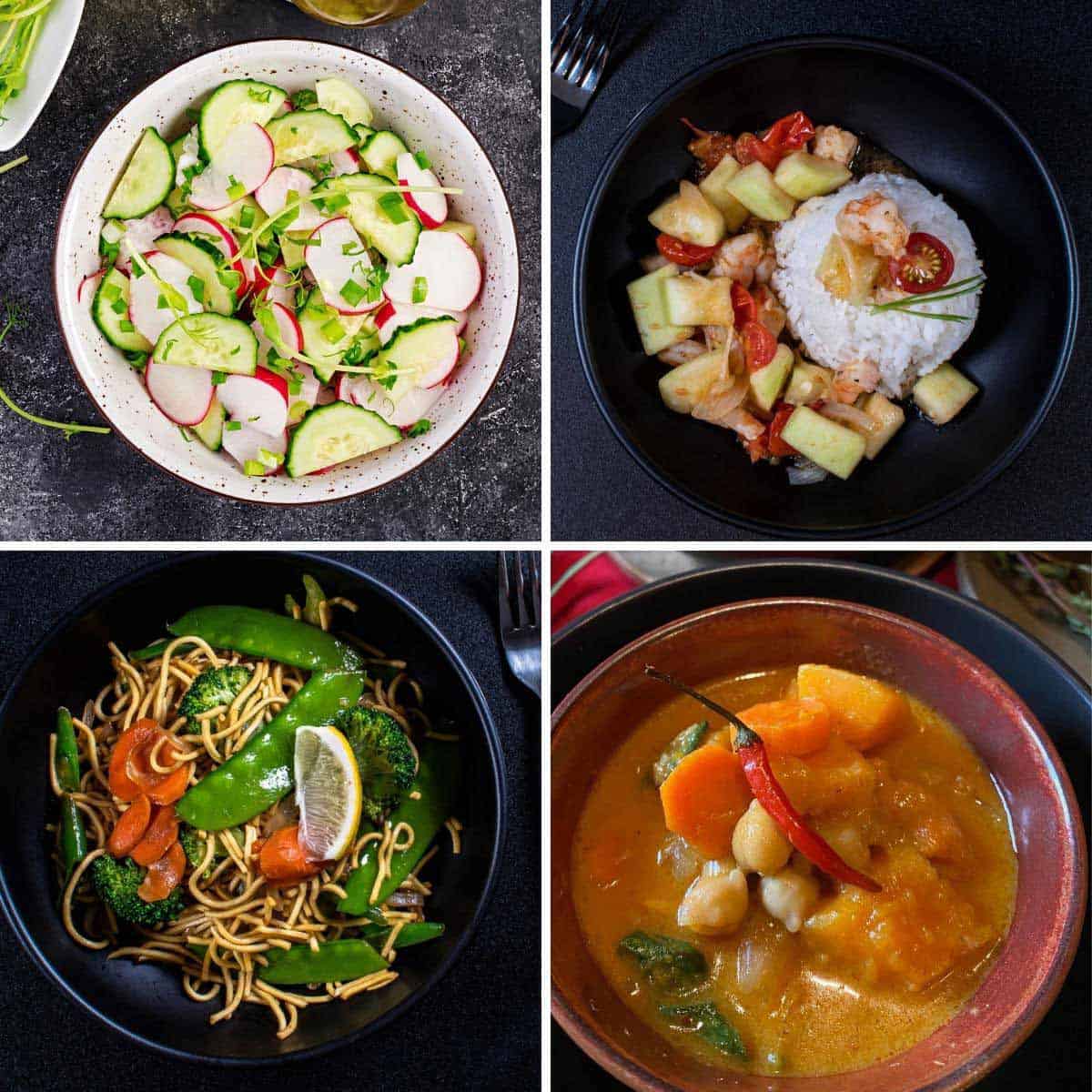

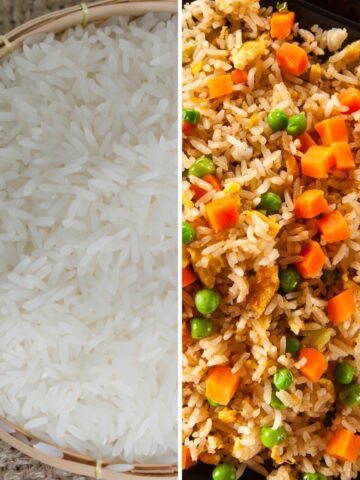
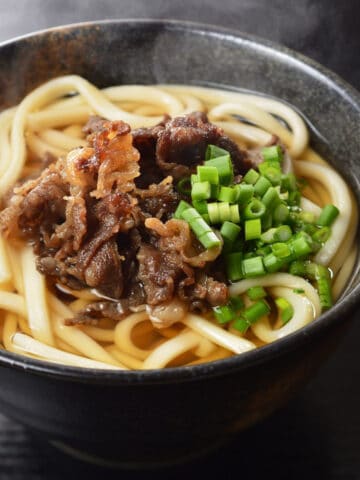
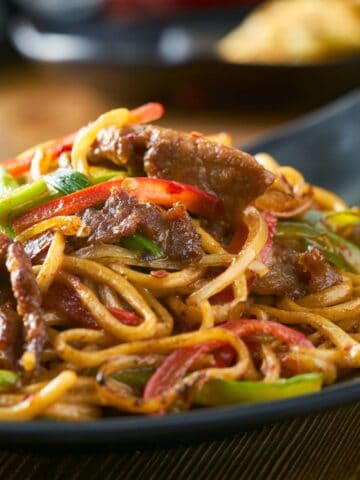
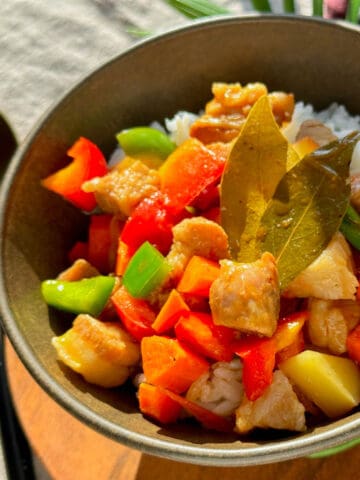
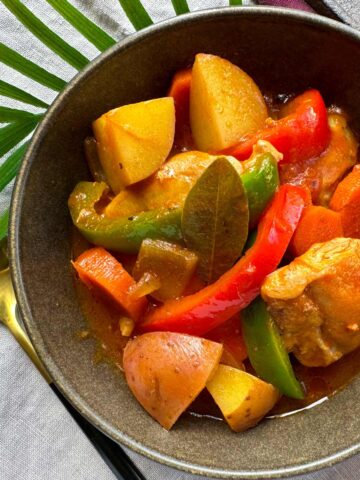

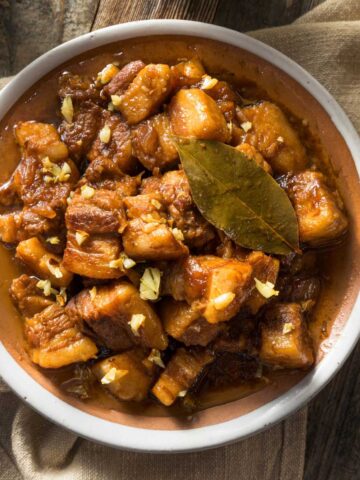


Lynda
I love all your recipes so thank you for putting this all together. ❤️